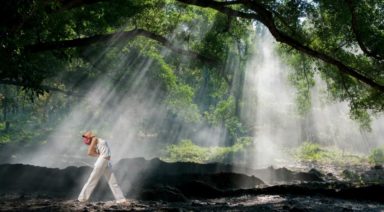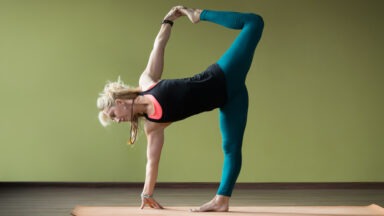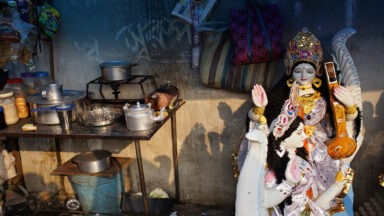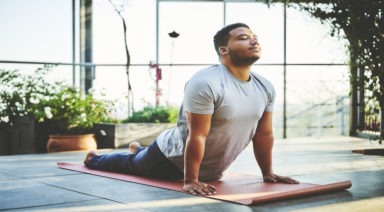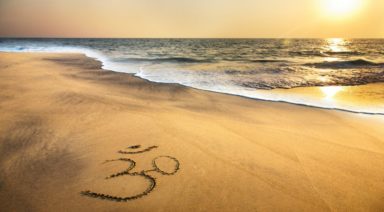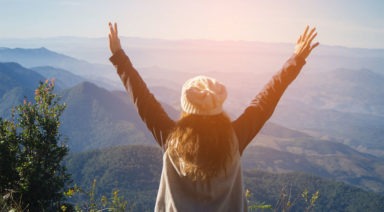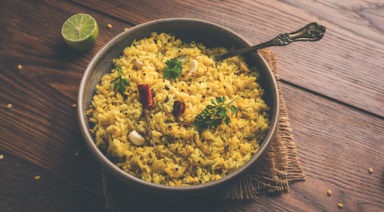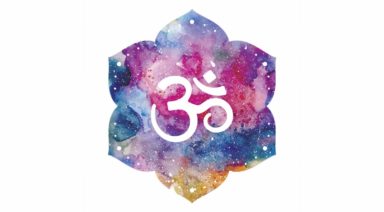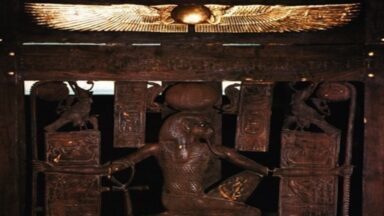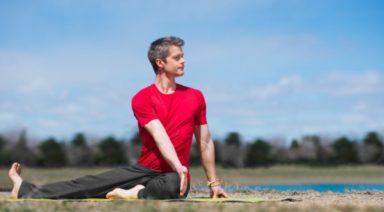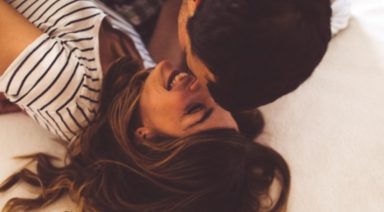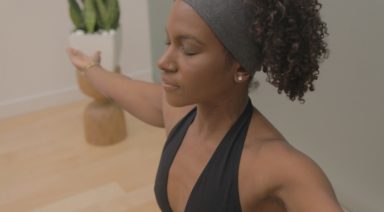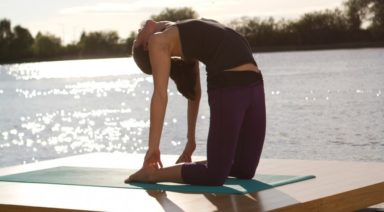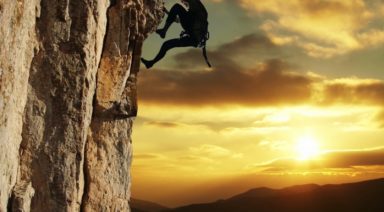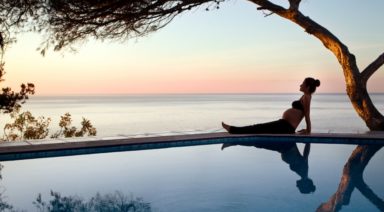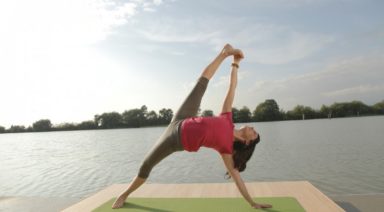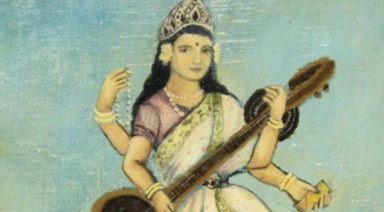How to Use the Yoga Sutras to Tame Your Anxiety
The Yoga Sutras Were Perfected, Passed Down, and Finally Written
The Yoga Sutras is the first official yoga textbook that offers the complete sequential system of yoga (also known as Samkhya) as prescribed by the Sage Patanjali himself more than 2,000 years ago. To understand the lineage, keep in mind that this system had been passed down orally from student to teacher for 3,000 years prior to the penning down of The Yoga Sutras. By the time yoga reached the Sage Patanjali, generations of devout practitioners dedicated their lives to the study of yoga, which would later be enumerated in the yoga sutras. Why were they so committed to this practice?
Back in the Day, There Was No “Medicine”
Yoga was first created and propagated at a time when psychotherapy and Western medicine did not exist. Yet anxiety and suffering did. Humans have always been anxious because that is how our brains developed evolutionarily in response to predation and threat. That is why humans have a negativity bias. We remember all that went wrong and focus on all that can go wrong in order to survive. But we are no longer just surviving.
Anxiety is a crucial component to our ability to remain alive in order to be able to procreate, protect and raise young, and ultimately keep offspring alive until their sexual maturity. Imagine what the outcome would have been if people just relaxed in the face of danger? That response would have opened people up to predation and death. Without anxiety, the nervous system would fail to become aroused. In turn, stress hormones such as cortisol and adrenaline would not be released and humans would not have been able to run and escape danger. They would have been hunted to extinction.
We Remember Bad Things As A Survival Mechanism
We remember bad things as a survival technique to keep us from repeating dangerous choices and to think about how to make more prudent choices in the future. Anxiety helps us think about what went wrong in the past so that we can imagine what could go wrong again, thus preventing it from taking place. Unfortunately our minds often intensify and worsen memories, making false and exaggerated stories up in an attempt to prevent us from getting hurt again. Instead of preventing us from getting hurt, anxious memories cause tremendous suffering.
People can have the same intense arousal response to a perceived threat similar to a real threat, such as a phone ringing or an email sounding in their inbox. Without anxiety, we might forget about threats altogether yet with anxiety we often confuse how threatening things truly are.
Danger Danger Everywhere
Our minds also don’t know how to tell a big threat such as a bear attack apart from a minor one, like our child crying out after falling down. This inability to discern danger from mere disturbance means that most people feel anxious a lot. Especially in our modern times where constant connectivity, social media, traffic, caffeine, busy schedules, and loud, bright environments cause our nervous systems to be on constant high alert.
Yoga as One Solution to Anxiety
The yoga sutras offer a solution to the issues associated with anxiety. Though I will qualitatively say that for some people yoga and meditation are not enough. Some people need mental health treatment, sometimes in conjunction with western medicine. Yoga is not a substitute for mental health care. The yoga sutras can help diminish anxiety as well as enable practitioners to learn about their anxiety patterns and reactions to it. That means some people would absolutely benefit from a multipronged approach including mental health services, western medicine, and yoga. Remember that when the Sutras were written yoga was the only solution available.
Yoga and Anxiety
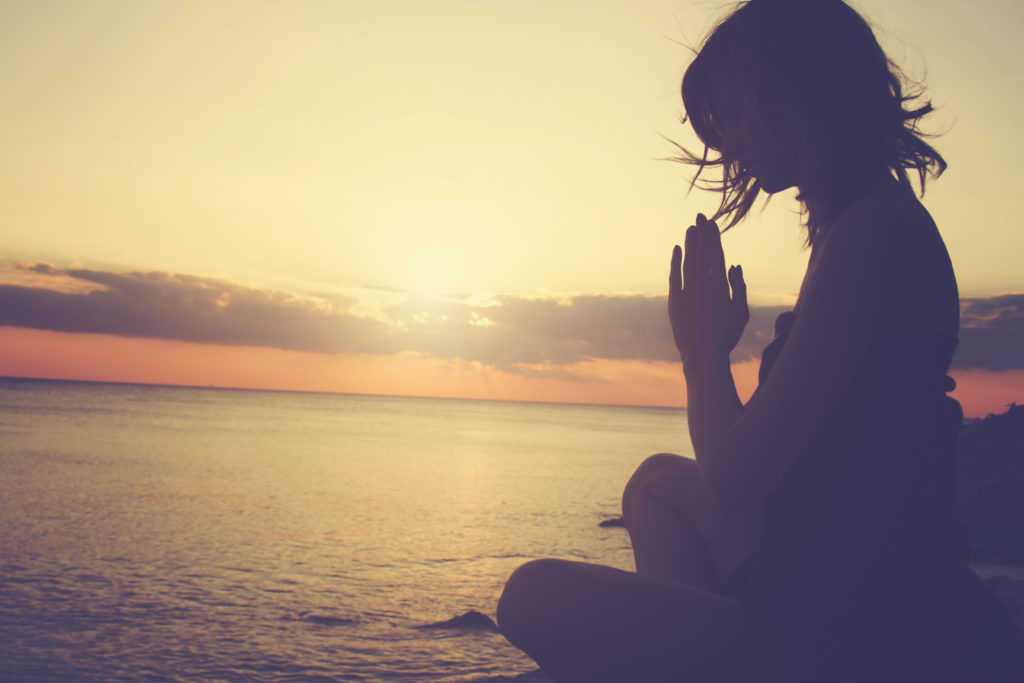
The ultimate effect of following the path laid out by Patanjali is to experience the effortless, indivisible state of the seer.
-B.K.S. Iyengar, Light on the Yoga Sutras of Patanjali, P.3
The Yoga Sutras say that yoga means union and that yoga is the cessation of the fluctuations of the mind. If the mind is at rest and able to be at one with all that is, there is nothing to distract and cause worry. To be the seer, or the one that witnesses, means that we have gotten to the first division of the Yoga Sutras: Duality.
Purusha and Prakriti: The Witness Watching Nature
Purusha is a Sanskrit word used to describe consciousness, also known as the seer, the witness, and the one that is watching the world unfold. Each person has, at the root of their being, a pure consciousness (purusha) with which to observe the world. When anxiety hits, we think that we are our bad thoughts. “I am nervous. I am stressed. I am afraid.” Purusha is not the thought. When you zoom out and watch your thoughts, the thing watching them is purusha or pure consciousness. Once you see that you are watching your thoughts, you know you are not your thoughts. This is the dual nature of purusha and prakriti.
Prakriti means nature, and like the nature of all things, it changes. Thoughts are prakriti. Your body is prakriti. The weather is prakriti. Everything else is prakriti except consciousness. Purusha is always there. When we tap into it we can observe, witness, and see nature as it unfolds.
How to Balance Yourself by Understanding the Three Gunas
The three gunas follow Purusha and Prakriti in the Yoga Sutras, and therefore are secondary in importance to them. The Three Gunas are Tamas which means inertia, stuckness, and non-change. Rajas means change, movement, or transition. Satva means being, existing, and goodness.
You can recognize tamas when you feel stuck doing the same thing over and over. For example, people often feel stuck in bad habits. Think of what it feels like to go home after work and just sit and watch TV every day. You may enjoy it in the moment, but that kind of behavior will hold you in place and keep you from realizing your potential. It can be anxiety provoking you to look in the mirror and think, “How can I be stuck like this?” Yet, the awareness of your state of Tamas can help you to get moving again. Then, the gunas may braid and another feeling becomes dominant, Rajas.
When Rajas is the dominant strand, it feels like everything is changing. A common example is the transition from summer break into the academic year. It is often signaled by a change in the weather, more wind, less heat, and shorter days. It can mean that it’s time to get to work and create a rhythm in your schedule. It can be anxiety provoking you to move from a time of leisure to a time of hard work. Sometimes our minds race and our sleep becomes disturbed. This shift is also temporary. Therefore, if transitions bring out your anxiety, know it won’t be this way forever.
The Gunas will eventually braid the thread of Satva on top. This is the state you feel when you are neither stuck nor transitioning. It is a state of being in the flow. This is a time after the shift into a new academic year when the rhythm of work, family, and extracurricular are all known. This is a time of ease and comfort.
Satvic states are required to reach higher states of consciousness. They are not better than the other states because each of these three strands make up nature of life as we know it. Without Rajas, we would never have the impetus to move into a flow state. Without Tamas, we would never be able to stay long enough to enjoy the ride. All three Gunas are needed to experience life as a human.
Practicing Self-Restraint &
How to Identify Your Patterns
In one article, there is not room to describe the entire Eight Limb Path of Yoga that follows the Gunas in the Yoga Sutras. Let’s conclude with the first Limb: The Yamas: Self Restraint Practices.
Yamas- Self Restraint Practices
The Yamas are Self restraint practices that make up the first limb of yoga. They translate to: non-harm, non-lying, non-coveting, non-stealing, and moderation. Let’s break them down as they relate to anxiety.
Non-harm/Ahimsa: Anxiety can be harmful when it goes unchecked. So when we feel it rise up, we can decide to offer ourselves and others love. For example, anxiety may cause you to misinterpret someone’s quietness as them being rude. When, if you just apply some love and the philosophy of non-harm, you can clear the mental fog to be able to discern that they are not being rude, just quiet. You can then decide to try to connect with the person rather than assume they are unlikable. Applying love and non-harm can open you up to better connections and fewer negative assumptions about yourself and others.
Non-lying/Sayta: Have you ever been worried and made up a million worst-case scenarios in your mind? It’s human to do so! Next time you are worrying, ask yourself if the thoughts are factual. Pause to ask yourself, “Is this thought true?” If your thoughts are not factual or helpful, you can let them go and, with it, your anxiety.
Non-stealing/Asteya: This restraint is less about stealing in a literal sense and more about a mentality of being okay with having what you have. It’s about not keeping up with the Jones’. When we wish we had what others possess, be it a car, relationship, or state of being, it can feel depleting and become anxiety provoking.
Nowadays with social media, it can feel like everyone else is taking amazing vacations and buying new cars. We naturally wish we had what they have. Coveting what others have makes us suffer. The Yamas offer an alternative to wishing we had what others have.
Additionally an attitude of contentment will bolster your ability to practice non-stealing. When you look at a Facebook photo of a friend smiling widely with their beautiful new spouse, rather than focus on what may be lacking in your loving relationships, focus on what is good about them.
Non-attachment/Aparigraha: Have you ever let go of something and doing so felt like freedom? Letting go of trying proving yourself is a mindset that is sure to take the pressure off and relieve anxiety. And what a relief it is.
Letting go of keeping up with others frees us. We can accept things as they are right now in the present moment.
Our happiness does not depend on needing anything to change. Such conditional thinking lacks love and allowance. It’s not that we don’t care about outcomes when we practice non-attachment, it’s that we do what we can and accept that there are external forces that will affect the outcome.
The Serenity Prayer is a perfect example of the non-attachment mentality: “God, grant me the serenity to accept the things I cannot change, Courage to change the things I can, And wisdom to know the difference.”
Moderation/Bramacharya: We may also feel anxious when we have too much or too little of something. A common example would be too much caffeine and not enough sleep. The practice of moderation regulates the body and mind which in turn, relieves anxiety. Are you beginning to see how living by the restraints of the Yamas may actually help you face your anxiety?
Try incorporating some of the yoga philosophy from the Yoga Sutras in your everyday life. Notice how doing so affects your awareness. Notice if you can lean on the yoga mindset to release you from suffering when you feel anxious.
The Science of Suffering: Understanding the 5 Kleshas and What They Really Mean

For most of us, life is pretty simple when we’re born. Our needs are met. Our concerns are only essential. Our world is new, beautiful, and engaging. And, most importantly, we are connected to the source of the universe, enjoying a direct line to love. In the profound teachings in A Course in Miracles, one of the most foundational beliefs is that when you are connected to this source your life is good, miraculous in fact. But, when separated from it, life is painful and complicated; you are overwhelmed with the feeling of being lost.
In Patanjali’s Yoga Sutras, another equally profound book of wisdom, the concept of being separated from the universal source of love is broken down into five identifiable roots of suffering. Known as the kleshas, these roots are what keep us away from love and, therefore, are what cause us to suffer.
By understanding the science of suffering by digging into these kleshas, you can begin to become aware of what is keeping you from enjoying life, what is keeping you from knowing, as the yogis say, your true nature.





